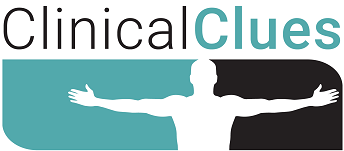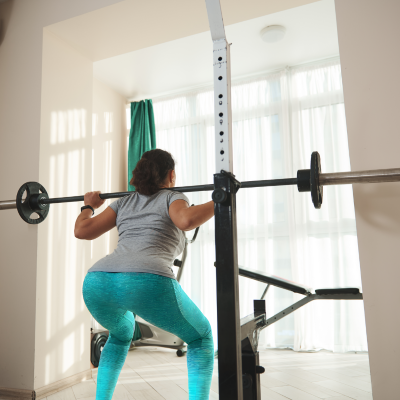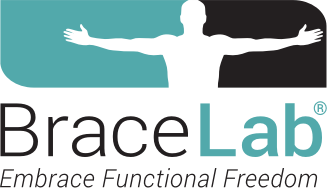Can Resistance/Weight Training Improve Joint Range of Motion?

November 2023 No. 35
Can Resistance/Weight Training Improve Joint Range of Motion?
by Jerry Ditz, DPT, Dip. Osteopractic, Cert. SMT, Cert. DN
Students and younger therapists are usually open-minded and enjoy learning how to make clinical decisions. Recently, when working with a group of students, we brainstormed about treatment interventions to increase range of motion. Our list included:
• Stretching
• Foam rolling
• Resistance/weight training
• Manual therapy
• Cupping
• Joint manipulation
• Joint mobilization
• Serial casting
• Dynamic or static progressive orthoses
Two students argued that resistance/weight training should not be on the list. This prompted us to examine the three pillars of clinical evidence (best available research, clinical expertise, and patient characteristics, culture, and preferences) to determine if resistance/weight training should be included.
Clinical Pillar 1– Best Available Research
Question 1: Does resistance training increase range of motion?
Published Research: Systematic review by Alizadeh.
• Resistance training increased the range of motion when using loads greater than body weight.
• Sedentary individuals experienced a greater increase in range of motion compared to active individuals.
• No agreement between the authors regarding why resistance training improved range of motion.
Student Discussion: No one fully understands why the range of motion improves with resistance training. Thinking that free weights demand a greater variety of joint motions, one student thought free weights would result in a larger increase in range of motion than would machine-based weights.
Question 2: Does it matter if a patient is performing machine-based resistance training or free weight resistance training?


Published Research: Randomized controlled trials by Futouros and by Morton.
• Both studies demonstrated that resistance training improves range of motion.
• Different styles of resistance training (free weights, machine, etc.) effectively improve range of motion.
Conclusion: Published research adequately supports the use of resistance training to improve range of motion and the type of training does not matter.
Clinical Pillar 2 - Clinical Expertise
Students observed patients during knee surgery rehabilitation who lacked full flexion at a time in the protocol when full range of motion was expected.
Treatment Observed: Olympic squat with 45 pounds of weight (weight of bar) for four sets of eight repetitions while monitoring for edema pre-exercise, post-exercise, and 24 hours post-workout.
• If no edema changes noted: Olympic squat repeated 48 hours later.
• If increased edema observed in response to workout, patient rested 96 hours before repeating.


Patient Reponse: Patients noticed an improvement of 5-10 degrees of total joint motion.
Discussion: Typically, post operative knee patients respond to resistance training with increased joint motion as well as the ability to increase the load within their available range of joint motion.
Conclusion: Yes, patients are willing to try resistance/weight training to improve knee motion.
As the students worked through the three pillars of evidence-based practice they were convinced resistance training can successfully improve joint range of motion. Does this mean we should replace current interventions with resistance training? Our discussion concluded that one should consider resistance training when traditional interventions are not obtaining the desired outcomes.
Does Resistance Training Relate to Finger Motion?
by Judy C. Colditz OT/L, CHT, FAOTA
If resistance training can improve larger joint range of motion, is there a place for it in regaining finger motion?
Finger flexion is driven by larger strong extrinsic muscles while finger extension is driven by smaller and naturally weaker intrinsic muscles. Because of this natural imbalance of power in favor of flexion, it is counterintuitive to think of resistance training for flexion when finger extension is limited. But clinical experience reminds me of patients who have gained finger extension when working on flexion as well as gained flexion when working on extension (albeit rarely the desired range!).
This Clinical Clue stimulated me to consider why this happens. The author challenged me by stating: “If you are trying to improve finger extension, it may be beneficial to resistance train flexion, as it may enhance your other extension exercises by overcoming the defensive stretch reflex of the extrinsic flexor muscles.” But does this apply to the fingers?
In the student exercise above, the focus was on increasing range of motion, which occurred along with increasing strength. In the fingers perhaps the increased range of motion occurs because of increased flexibility of both muscle and soft tissue, rather than increased strength?
As the author above reminded me, therapists often assume squatting activities do not improve hamstring flexibility because the squatting movement decreases instead of increases the length of the hamstring muscle during knee flexion. The opposite, however, has been demonstrated in patients. It is believed this increased hamstring flexibility can be attributed to:
1. Reciprocal inhibition of the hamstrings from the quadriceps activity and
2. Relaxation of the hamstring after maximal contraction of quadriceps (agonist muscle).
The next time I see a patient with a finger flexion contracture, I am going to ask them to complete some resistive gripping exercises, followed by active finger extension. I am now curious to see if there are any positive gains to finger extension! My uncertainty is whether the approach that is successful with large joints with balanced agonist/antagonist muscles can be applied to smaller joints with a pre-existing muscle power imbalance as in the finger? Do any of our readers have comments/experience with this approach for finger motion?
Download Clinical Pearl No. 35, Can Resistance/Weight Training Improve Joint Range of Motion?, November 2023
© BraceLab; 2023 all rights reserved
Disclaimer: BraceLab Clinical Pearls are intended to be an informal sharing of practical clinical ideas; not formal evidence-based conclusions of fact.
